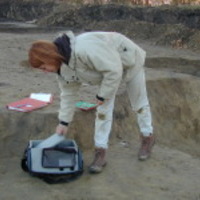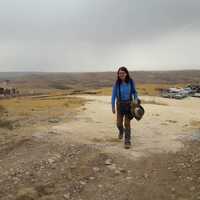Papers by M.L.K. Murty Prof.
South Asian Studies, 1997
... Narada advises him that since he is going to a woman (stres), he himself should go in the dis... more ... Narada advises him that since he is going to a woman (stres), he himself should go in the disguise of a beautiful maiden {mohini). So Vobulesudu turns into a beautiful woman, ... In this disguise, as an Yerukula sani, he leaves the forest and sets out for Anandapatnam. ...
Proceedings of the Prehistoric Society, 1969
World Archaeology, 1985
... The archaeological evidence from Late Mesolithic occupation at the MCG II rockshelter site an... more ... The archaeological evidence from Late Mesolithic occupation at the MCG II rockshelter site and the Chalcolithic village settlement of Ramapuram, foreshadows such phenomena in the pre-history of this region. ... Bagor: a Late Mesolithic settlement in north-west India. ...
World Archaeology, 1981
... Page 3. Subsistence behaviour on the south-east coast of India 49 ... If this could be so, du... more ... Page 3. Subsistence behaviour on the south-east coast of India 49 ... If this could be so, during Pleistocene and early Holocene times, when there was no real destruction of the flora, the vegetation must have been more extensive and uninterrupted than it is today. ...

Quaternary International, 2008
Additional remains of small mammals (rodents-Hystrix sp., Bandicota cf. bengalensis, Millardia cf... more Additional remains of small mammals (rodents-Hystrix sp., Bandicota cf. bengalensis, Millardia cf. kathleenae, cf. Rattus rattus; Lagomorph-Lepus sp.) reptiles (Python sp. and serpentes indet., Varanus sp.), amphibian (cf. Bufo melanostictus) and aves (cf. Gallus gallus) are reported from deposits spanning the last 20,000 yrs BP of Muchchatla Chintamanu Gavi (MCG). In the Late Pleistocene, the area around the Kurnool Caves had a very diverse fauna indicating the presence of wooded grassland, gallery forest and a wellwatered landscape. In contrast, today the area is an arid shrubland and only a fraction of the Late Pleistocene vertebrate fauna has survived. The disappearance of several vertebrate taxa was probably due to a very arid phase of the Last Glacial Maxima (LGM). Excessive hunting by prehistoric man largely in Holocene time could have caused the demise of the mammals such as Rhinoceros, Equus, Bubalus, Bos, Boselephas, Antilope and Gazella. r
Journal of Field Archaeology, 1979
... for the overall lithic evidence. Thus, as shall be demonstrated below, the Indian Upper Palae... more ... for the overall lithic evidence. Thus, as shall be demonstrated below, the Indian Upper Palaeolithic can be divided into three major techno-typological groupings: (1) ... The Indian Middle Palaeolithic lithic industry, as elsewhere, is basically an expression of the flake ele-ment. ...











Uploads
Papers by M.L.K. Murty Prof.